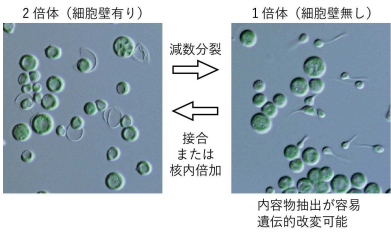研究参加者の人口統計学的データ、画像診断結果、バイオマーカーがリスク判定に役立つ Demographic data, imaging results, biomarkers of study participants help determine risk
2022-09-30 ワシントン大学セントルイス
 When people participate in studies of aging, they often want to know what their individual risks of developing dementia from Alzheimer’s disease are. Washington University researchers have developed an algorithm that can help provide them with information about what their risks may be. (Image: Getty Images)
When people participate in studies of aging, they often want to know what their individual risks of developing dementia from Alzheimer’s disease are. Washington University researchers have developed an algorithm that can help provide them with information about what their risks may be. (Image: Getty Images)
このアルゴリズムは、そのような情報を明らかにし、アルツハイマー病に関連する認知症のリスクが高いかどうかを個人に知らせるのに役立つ方法である。
アルツハイマー型認知症に寄与する様々な要因を調べ、その情報を使って、アルツハイマー型認知症の初期症状を発症する個人の絶対リスクを見積もることを目的としたアルゴリズムを作成した。このアルゴリズムは、Knight ADRCでの加齢研究に参加するボランティアに、疾患のバイオマーカーを理解してもらい、参加者の最終的な転帰を評価するための臨床試験で使用するために開発された。
現在わかっていることを有意義な形で参加者に伝え、新しい研究やデータが出てきたときにアルゴリズムを簡単に更新できるように、アルゴリズムを開発した。
このアルゴリズムは、アミロイドPETスキャンの結果と脳の海馬の体積(海馬が小さいほどアルツハイマー型認知症に関連する障害のリスクが高いことが多い)を組み込んで、そうした追加情報がわかっている場合にリスクがどのように変化するかを示している。
<関連情報>
- https://source.wustl.edu/2022/09/risk-of-alzheimers-dementia-may-be-predicted-with-help-of-new-tool/
- https://alz-journals.onlinelibrary.wiley.com/doi/abs/10.1002/alz.12781
バイオマーカーに基づくアルツハイマー型認知症絶対リスク算出のための柔軟なモデリングアプローチ A flexible modeling approach for biomarker-based computation of absolute risk of Alzheimer’s disease dementia
Sarah M. Hartz,Jessica Mozersky,Suzanne E. Schindler,Erin Linnenbringer,Junwei Wang,Brian A. Gordon,Cyrus A. Raji,Krista L. Moulder,Tim West,Tammie L. S. Benzinger,Carlos Cruchaga,Jason J. Hassenstab,Laura J. Bierut,Chengjie Xiong,John C. Morris
Alzheimer’s and Dementia Published: 30 September 2022
DOI:https://doi.org/10.1002/alz.12781
Abstract
Introduction
As Alzheimer’s disease (AD) biomarkers rapidly develop, tools are needed that accurately and effectively communicate risk of AD dementia.
Methods
We analyzed longitudinal data from >10,000 cognitively unimpaired older adults. Five-year risk of AD dementia was modeled using survival analysis.
Results
A demographic model was developed and validated on independent data with area under the receiver operating characteristic curve (AUC) for 5-year prediction of AD dementia of 0.79. Clinical and cognitive variables (AUC = 0.79), and apolipoprotein E genotype (AUC = 0.76) were added to the demographic model. We then incorporated the risk computed from the demographic model with hazard ratios computed from independent data for amyloid positron emission tomography status and magnetic resonance imaging hippocampal volume (AUC = 0.84), and for plasma amyloid beta (Aβ)42/Aβ40 (AUC = 0.82).
Discussion
An adaptive tool was developed and validated to compute absolute risks of AD dementia. This approach allows for improved accuracy and communication of AD risk among cognitively unimpaired older adults.


